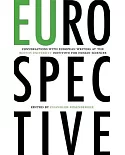The Courtship of Miles Standish is an 1858 narrative poem by American poet Henry Wadsworth Longfellow about the early days of Plymouth Colony, the colonial settlement established in America by
the Mayflower Pilgrims. Set against the backdrop of a fierce Indian war, the tale focuses on a love triangle between three Pilgrims: Miles Standish, Priscilla Mullens, and John Alden.
Longfellow claimed the story was true, but the historical evidence is inconclusive. Nevertheless, the ballad was very popular in nineteenth-century America, immortalizing the Mayflower
Pilgrims. The Courtship of Miles Standish (1858) was a literary counterpoint to Henry Longfellow’s earlier Evangeline (1847), the tragic tale of a woman whose lover disappears during the
deportation of the Acadian people in 1755. Together, Evangeline and The Courtship of Miles Standish captured the bittersweet quality of America’s colonial era. However, the plot of The
Courtship of Miles Standish deliberately varies in emotional tone, unlike the steady tragedy of Longfellow’s Evangeline. The Pilgrims grimly battle against disease and Indians, but are also
obsessed with an eccentric love triangle, creating a curious mix of drama and comedy. Two bumbling, feuding roommates, Miles Standish and John Alden, vie for the affections of the beautiful
Priscilla Mullins, who slyly tweaks the noses of her undiplomatic suitors. The independent-minded woman utters one of the most famous retorts ever: "Why don’t you speak for yourself, John?".
The saga has a surprise ending, one full of optimism for the American future.





















